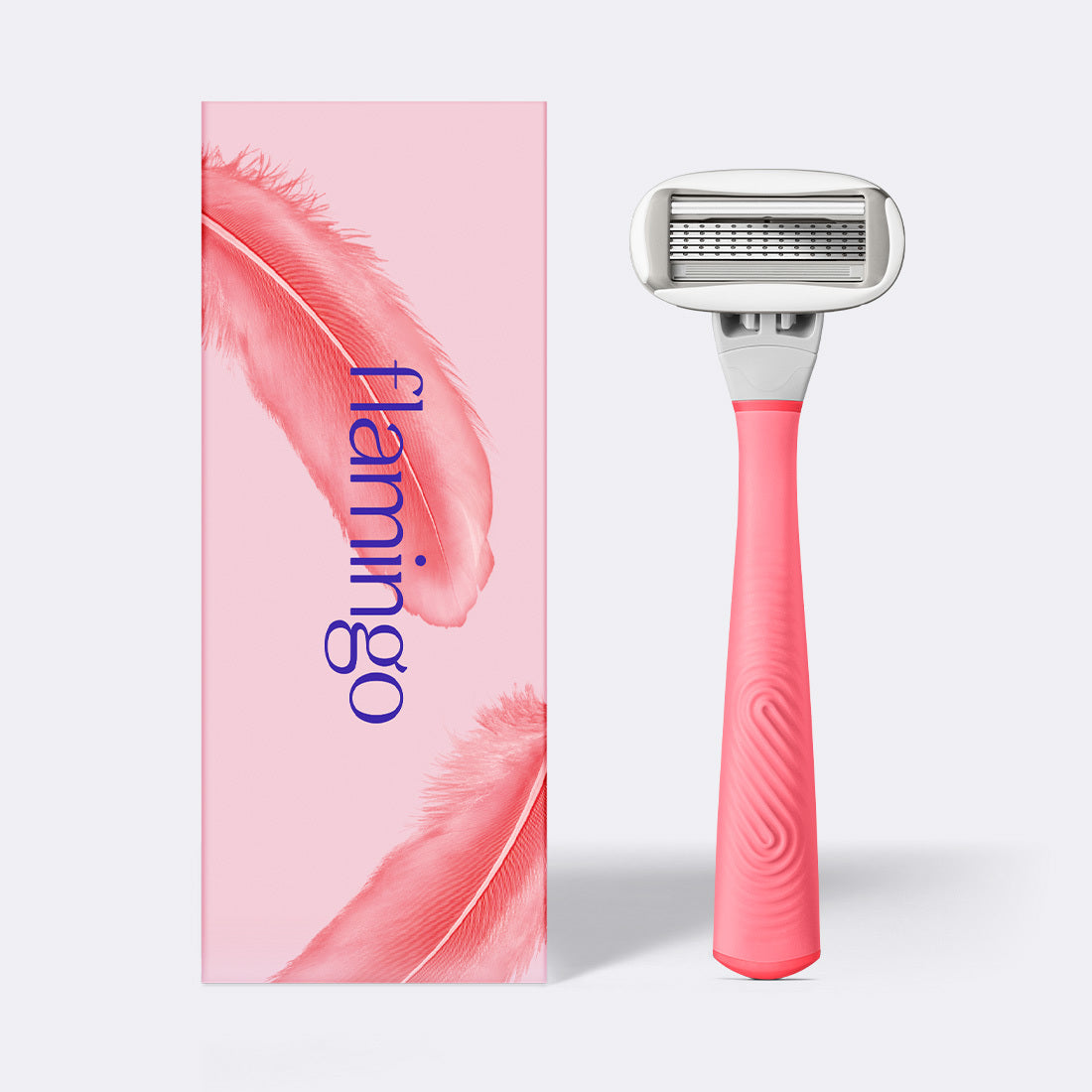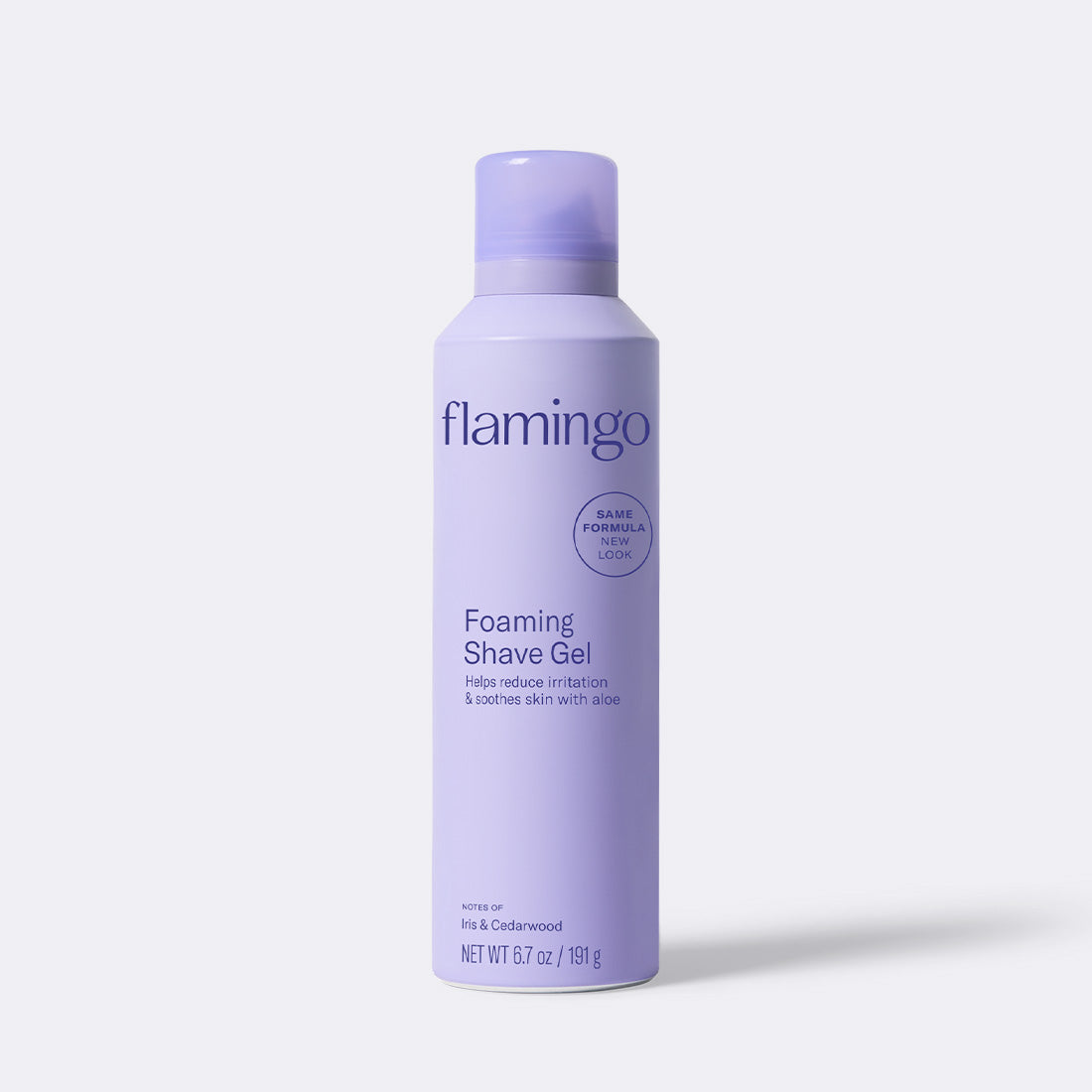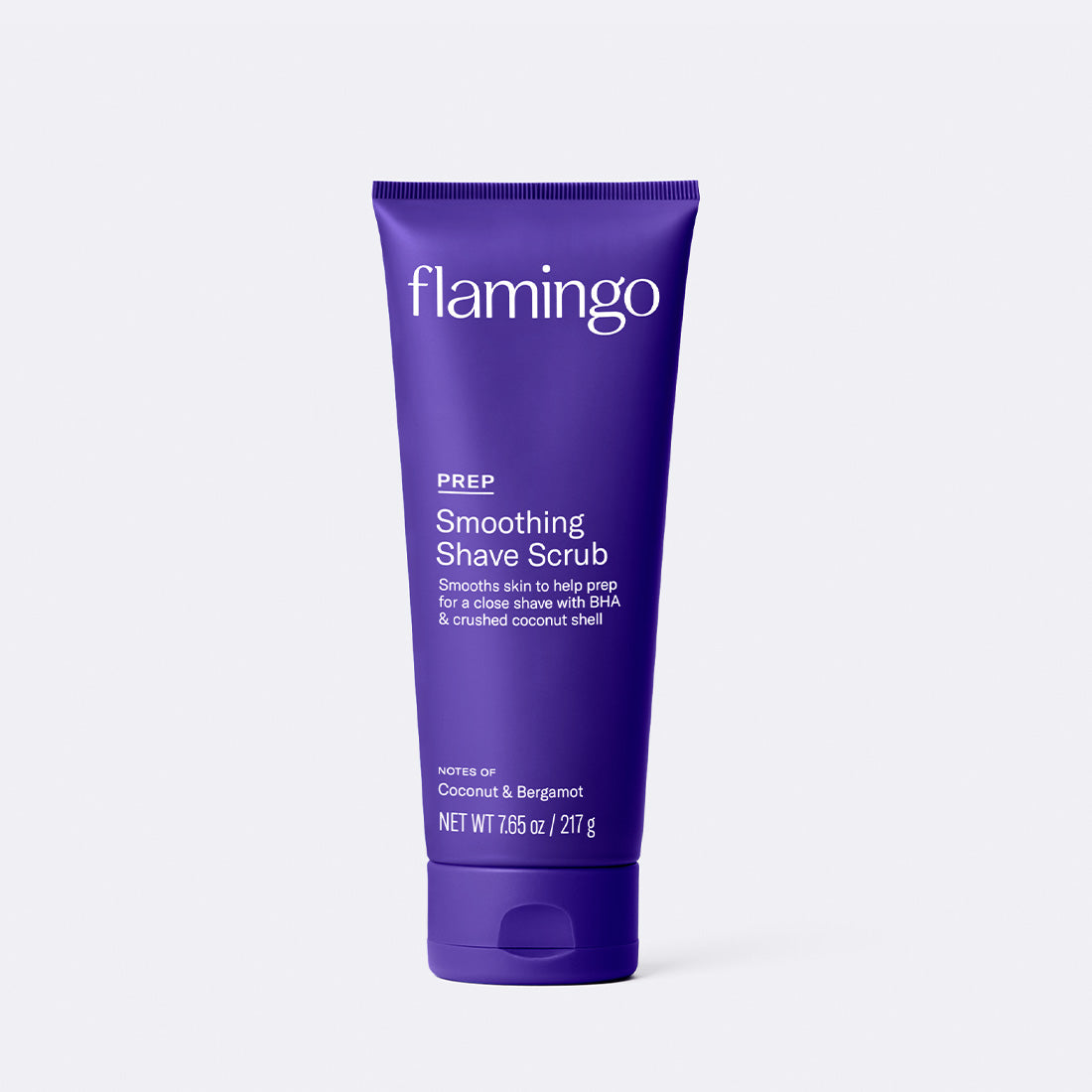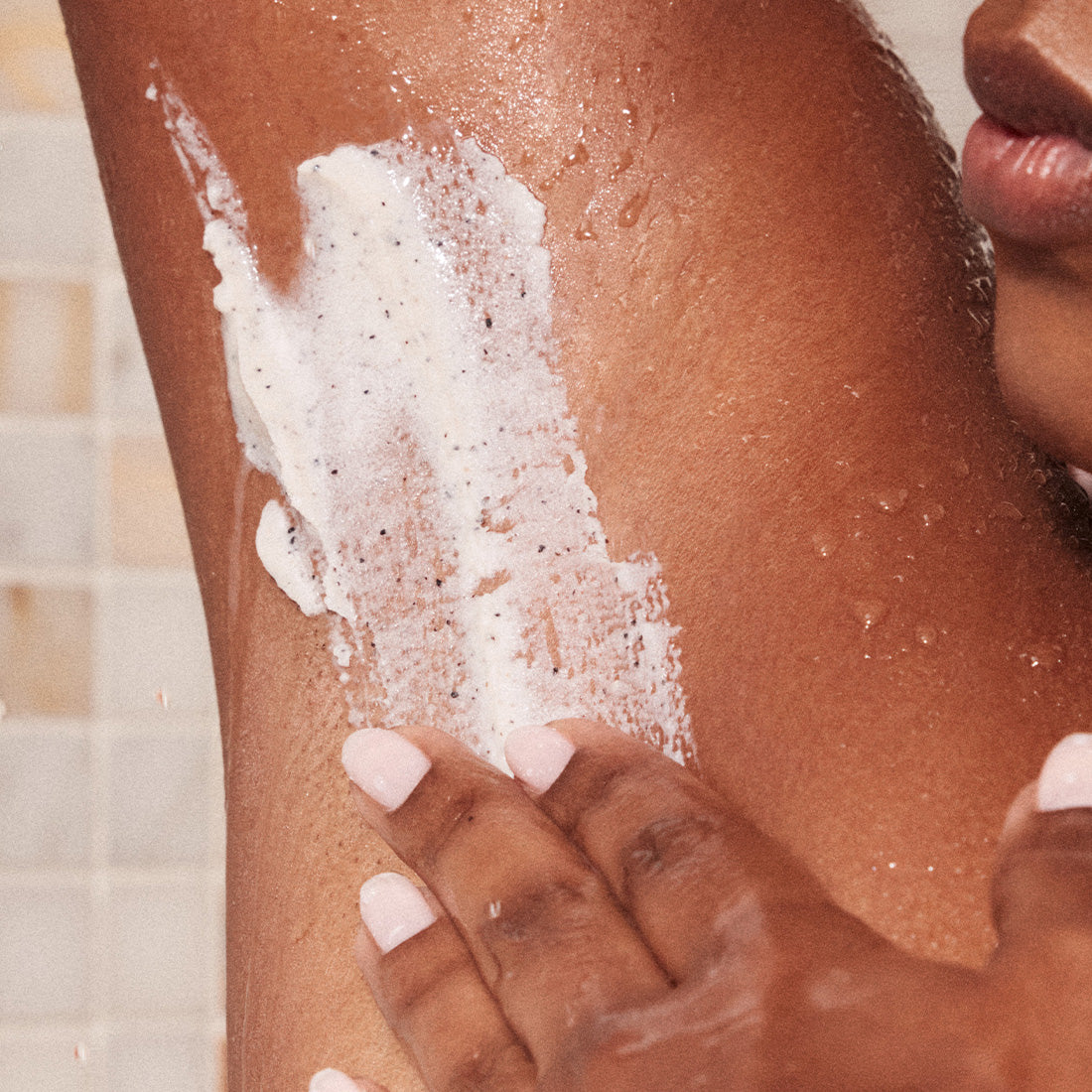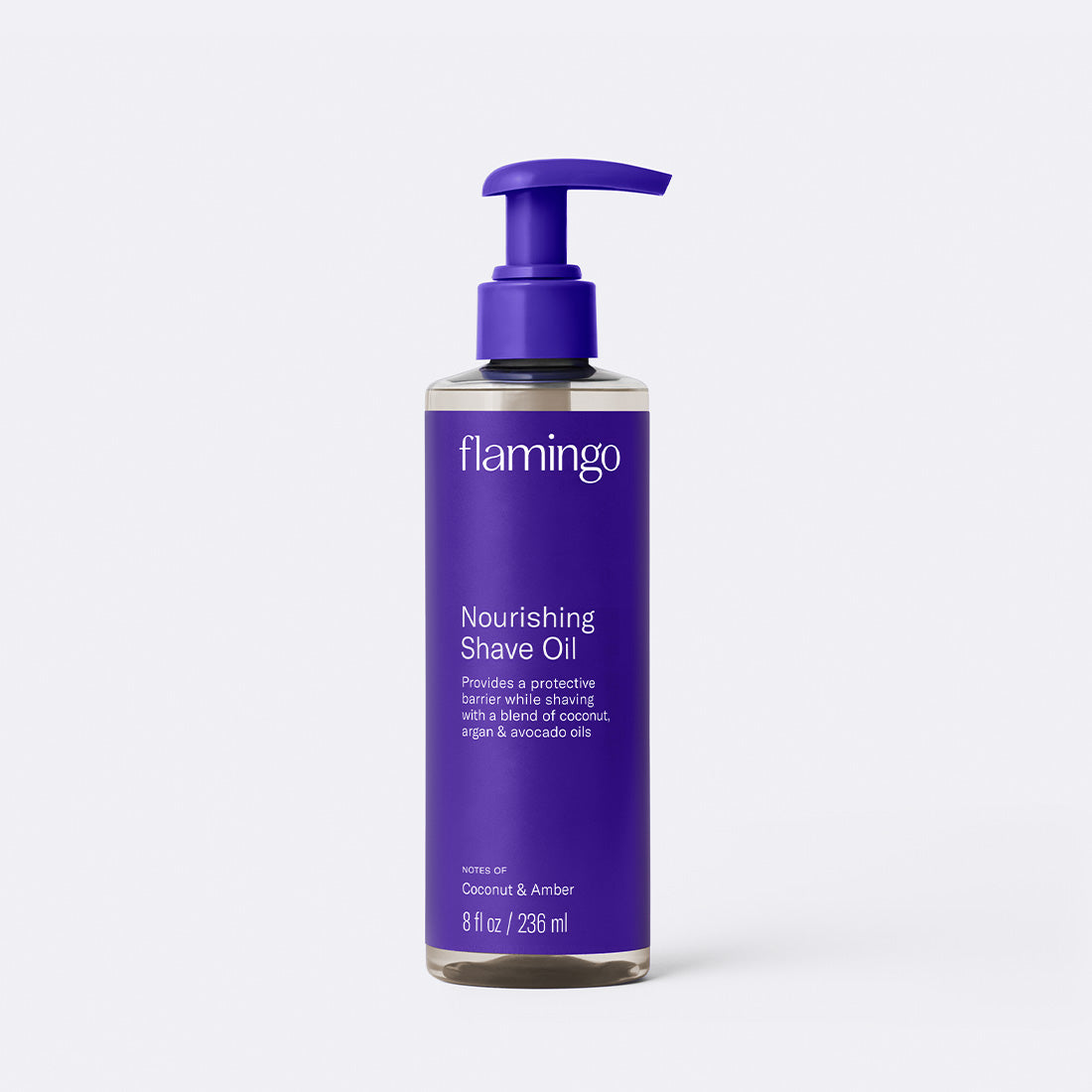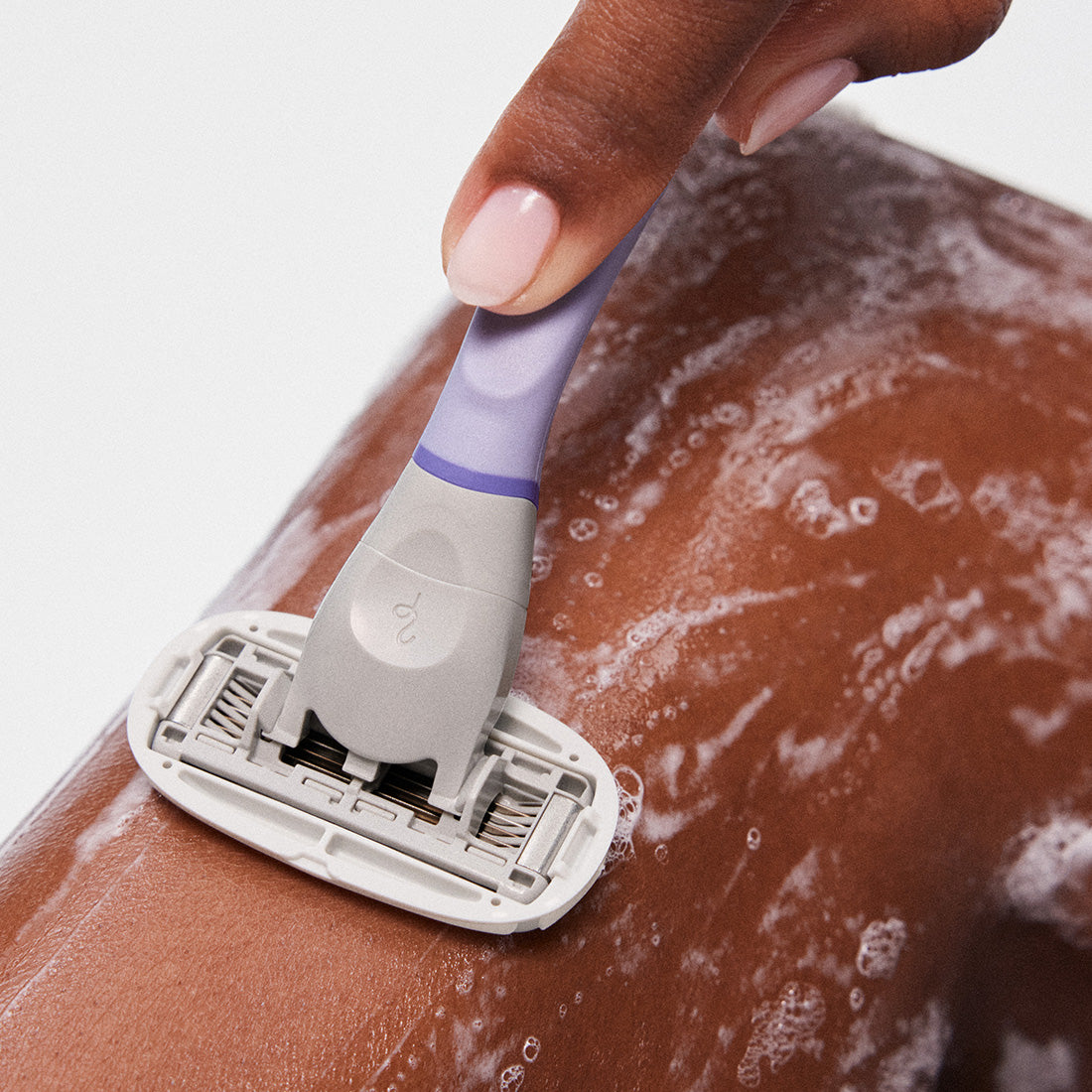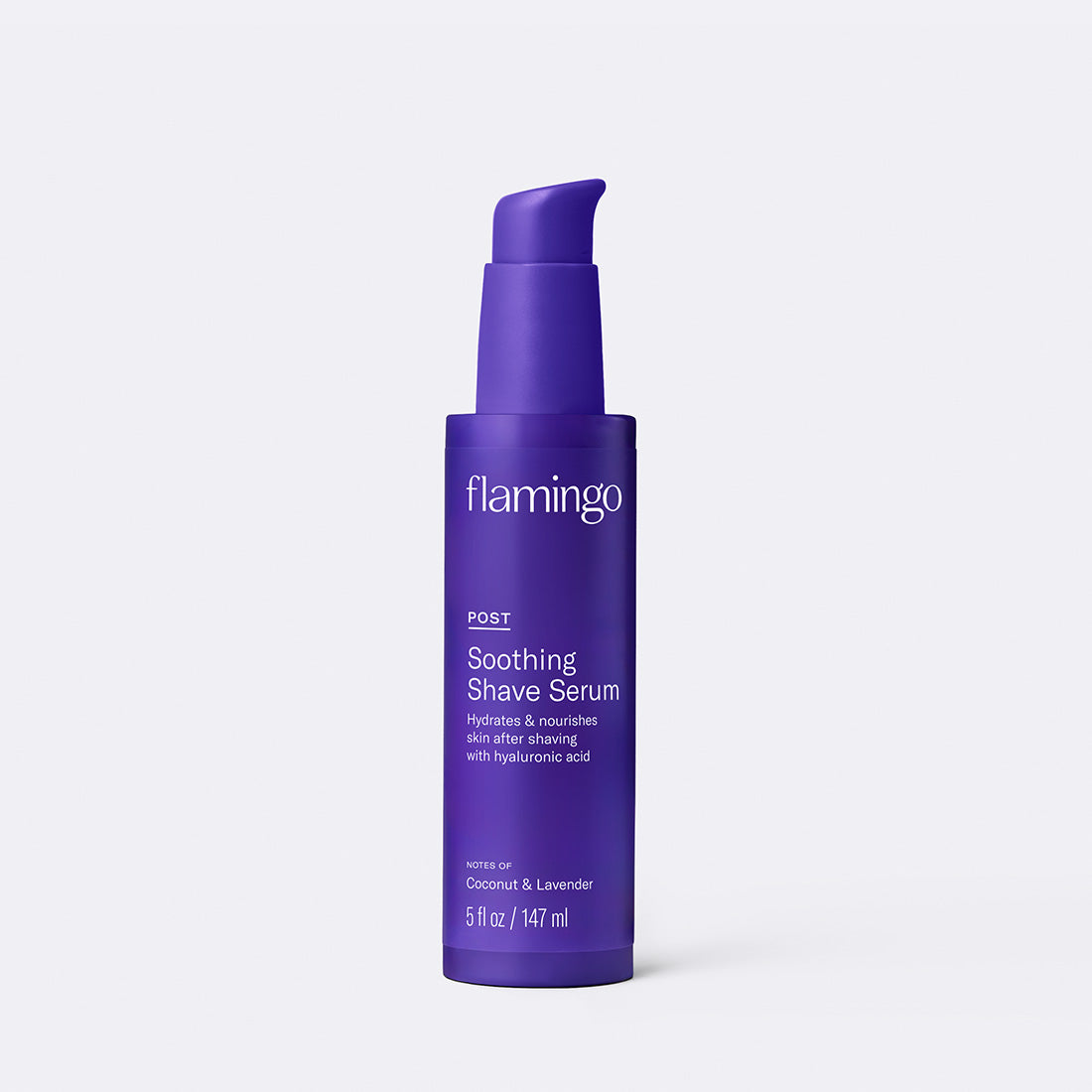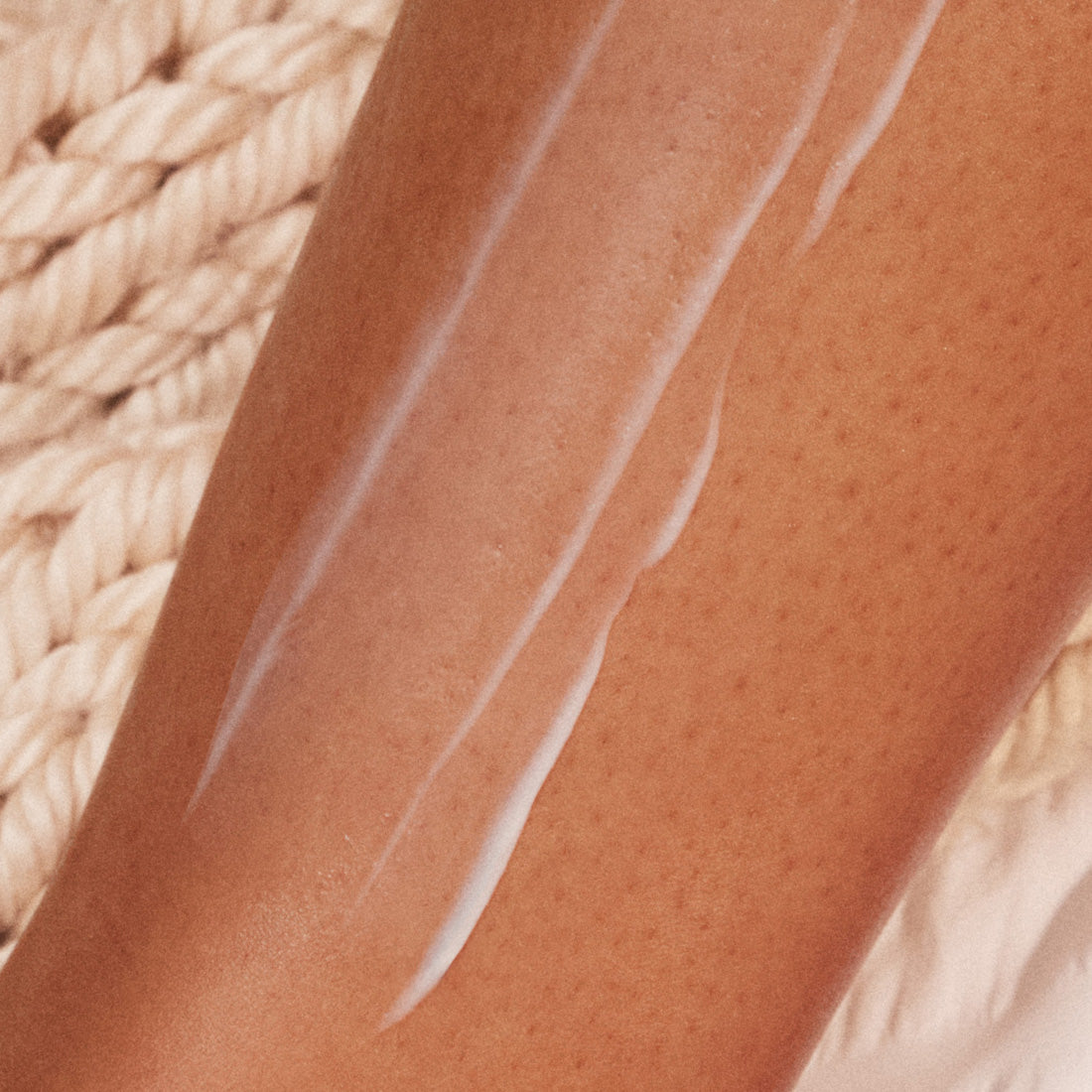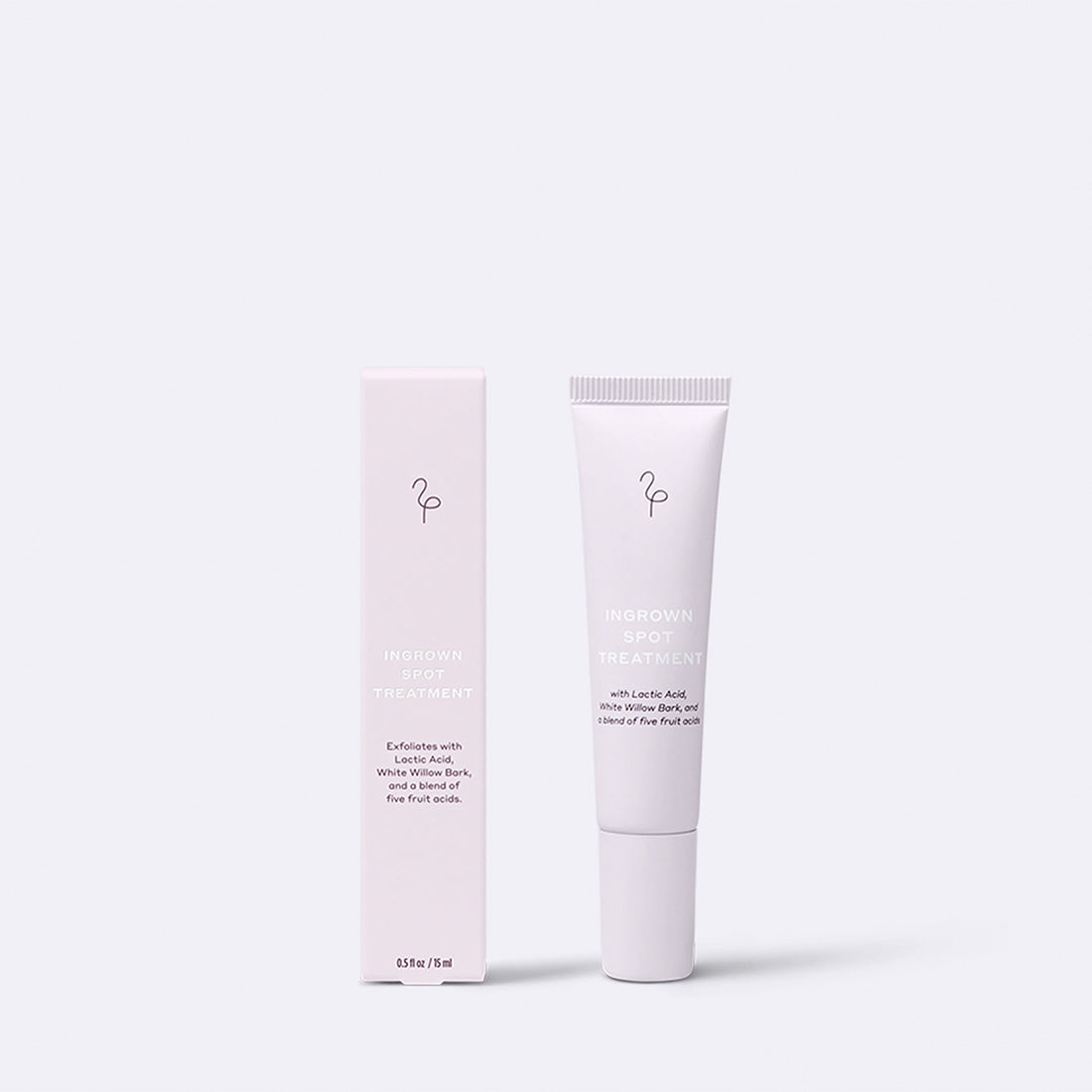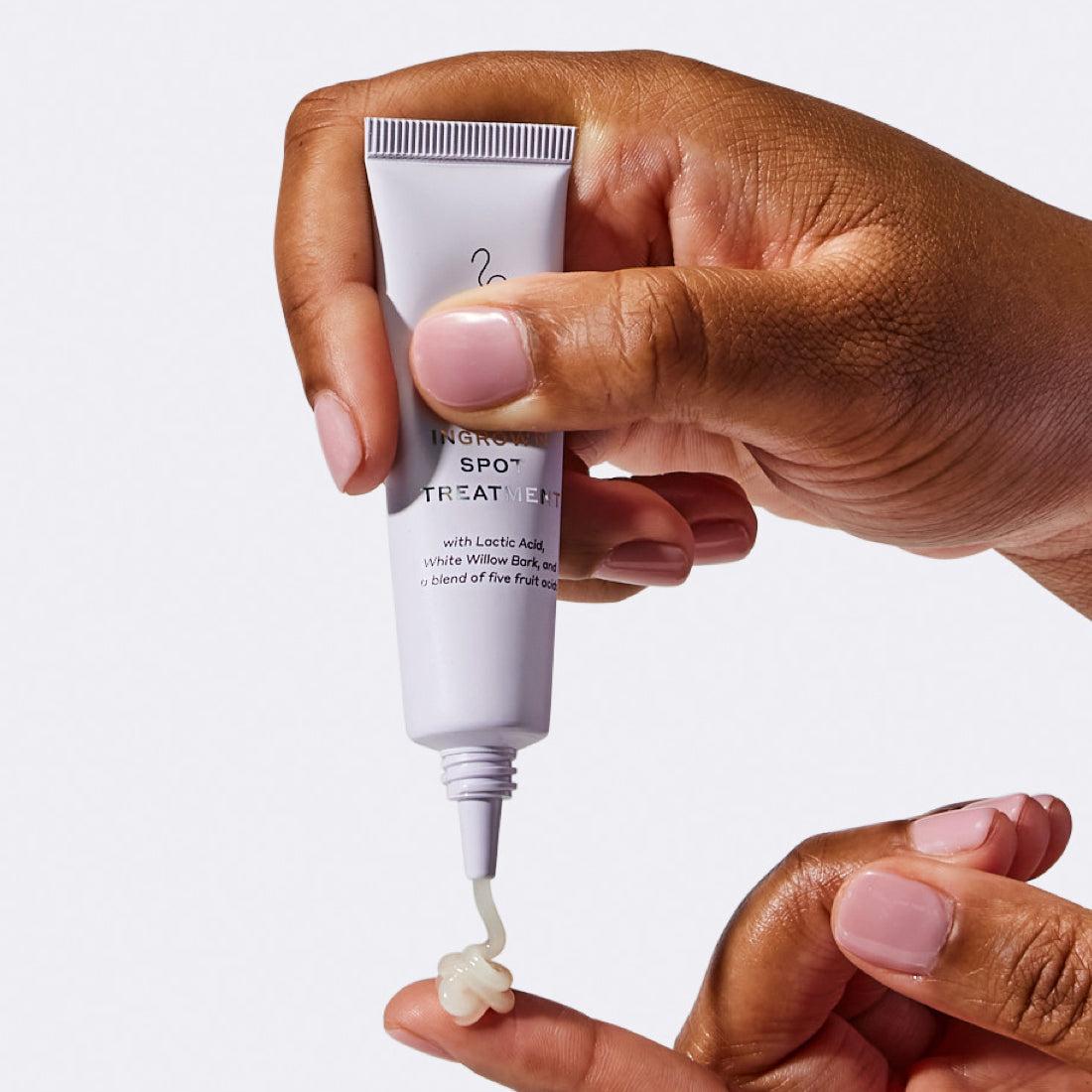WHILE IT MIGHT BE TEMPTING to just use a razor on dry skin, preparing your skin before you shave is the key to smooth results. Improper shave prep can lead to common problems like razor burn, bumps, and irritation. Skin prep for shaving is super easy and, dare we say, kind of relaxing. Think of it like a skincare routine for your body. Whether you’re a beginner shaving for the first time or a seasoned pro, we’ve got the tips to ensure you have a smooth, safe experience.
Step One: Assemble Shave Tools
Choose the Right Razor for You
The amount of options for women’s razors can be overwhelming, so which one should you choose? There are pros and cons to all of them, so let’s dive into it.
-
Single-Blade Razors
A single-blade razor, also known as a safety razor, features a single, sharp blade designed to cut hair at the surface of the skin without any lubrication strips. Single-blade razors can be good for sensitive skin because they can cause less friction than multiple blades. However, they have a very sharp edge and come with a learning curve. Without a lubrication strip, they don’t easily glide across skin unless they have help from lots of shave gel. It can take awhile to get the hang of shaving with a single blade and its likely that you can cut yourself in the learning process.
-
Multi-Blade Razors
A multi-blade women’s razor usually features a cartridge with 3 to 5 blades and a water-activated lubrication strip to encourage glide. Typically, the first blade pulls the hair, the second and third cut the hair, and the fourth and fifth clean up any hair left behind. The lubrication strip helps the razor blades glide along large stretches of the body, like your leg or armpit. A multi-blade razor provides a close, comfortable shave, but the additional blades can slightly increase the chances of ingrown hairs and irritation, especially without proper shave prep.
-
Electric vs. Manual Razors
An electric razor is a device that trims away body hair with little effort on your part. They can come with or without a cord, or be battery-operated or rechargeable. Electric razors can be versatile because you can usually use them to trim or shave, as well as shave wet or dry. However, they can be bulky, expensive, and inconvenient when you factor in the charging time or battery life. They can also require more passes to remove hair since the blades are not directly exposed, resulting in a less close shave.
A manual razor is usually faster than an electric razor and can give you a closer shave. Plus, they’re usually more affordable than electric razors. The only downside is that chances of irritation, nicks, and cuts are more likely with a manual razor, but this can be avoided through proper shave prep and technique.
-
Disposable vs. Reusable Razors
Disposable razors usually have one to five blades, and once those blades become dull you toss the entire razor in the trash. We recommend a reusable razor, i.e. a razor handle with detachable blade cartridges, since they usually feature higher quality handles than disposable razors, you can easily refill the blades when they become dull, and they’re overall less wasteful.
Our Recommendation
For most women, a multi-blade reusable razor is best for shaving. We recommend Flamingo’s Original Razor, which features 5 sharp blades, glide strips with aloe and shea butter, and a comfortable no-slip grip handle.
When to Replace Your Razor
For your best shave, always use a sharp razor blade. Dull blades can irritate skin, so we recommend changing your blades every 6 to 8 uses, or when you start to feel tugging or pulling of skin or hair when you shave. When in doubt, swap those blades out!
Choose Your Pre-Shave Skincare Products
-
Body Wash or Soap
It’s best to take a bath or shower before you shave to help hydrate your skin and hair, which makes them easier to shave. Plus, gently cleansing your skin removes any buildup of dirt, oil, or dead skin that could potentially clog your razor blades or trap hair and encourage ingrowns. Most body washes or soaps should work fine, especially those with moisturizing ingredients. Avoid any products with alcohol or other drying ingredients.
-
Pre-Shave Exfoliator
Exfoliating before shaving can help remove dead skin cells and lift hair, allowing your razor to glide more easily and give you a close, smooth shave. We recommend a gentle body scrub, like Flamingo Smoothing Shave Prep Scrub, which features a combination of chemical & physical exfoliants like BHA and crushed coconut shell.
-
Shaving Cream or Gel: Which is Better?
Using a shave gel or cream is important to help enhance your razor’s glide and reduce the friction that can cause irritation, razor burn, and bumps. Shave gel usually feels slick and cool, while shave cream has a more fluffy, creamy texture. Both are effective options, so it’s really up to your personal preference. Flamingo Foaming Shave Gel combines the best of both worlds: it’s a gel that transforms into a pillowy foam as you lather it onto your skin.
-
Another Option: Shave Oil
Shave oil is another way to add extra glide to your razor, plus it typically moisturizes your skin at the same time. It’s a great option if you have dry skin and are looking for ways to add extra hydration to your shave routine. Flamingo Nourishing Shave Gel adds a luxurious glide to your razor with a moisturizing blend of coconut, argan, & avocado oils that gives a protective barrier while shaving.
Step-by-Step Skin Preparation for a Smooth Shave
Step 1: Cleanse
Taking a bath or shower before you shave benefits both your skin and your razor. Gently cleansing your skin removes any buildup of dirt, oil, or dead skin that could potentially clog your razor blades or trap hair and encourage ingrowns.
Step 2: Exfoliate
Use an exfoliator to help remove dead skin cells that could otherwise clog your razor blades or cause ingrown hairs. You can use a physical exfoliator, like a body scrub, or a chemical exfoliator, like a body wash that contains salicylic or glycolic acid (also known as BHAs and AHAs). To avoid irritating skin, exfoliate no more than two to three times a week. We recommend Flamingo Smoothing Shave Prep Scrub, a gentle body scrub that’s safe for sensitive skin and made with a combination of chemical & physical exfoliants.
Step 3: Hydrate
Soak your skin under warm water for a couple of minutes. When your skin and hair are hydrated, they become easier to shave, which in turn helps avoid irritation. It can be tempting to shave on dry skin when you’re in a hurry, but that can increase the chances of irritation, bumps, and cuts. Slick, hydrated skin helps your razor glide along smoothly.
Step 4: Lather Shave Gel, Cream, or Oil
Gently rub your preferred shave gel, cream, or oil on wet skin to lather. If it washes away while you shave, reapply as needed. Flamingo Foaming Shave Gel and Flamingo Nourishing Shave Gel are two great options to give your shave the extra glide it needs.
Now you’re ready to shave!
Common Pre-Shave Mistakes to Avoid
-
Skipping Exfoliation Before Shaving
When you don’t exfoliate, you leave behind dead skin cells that can get trapped while shaving and cause ingrown hairs. Exfoliating is an easy step that helps encourage a smoother, closer shave.
-
Using a Dull or Old Razor
To safely shave your hair, always use a sharp razor blade. Dull blades can irritate skin, so we recommend changing your blades every 6 to 8 uses, or when you start to feel tugging or pulling of skin or hair when you shave. When in doubt, swap those blades out!
-
Dry Shaving Without Any Lubrication
Dry shaving without any water or shave gel causes major friction on skin. Hydrating your skin and hair helps prevent razor burn, bumps, and cuts.
-
Applying Too Much Pressure
If you find yourself having to apply a lot of pressure to get a close shave, that’s usually a sign that it’s time to change your blades. Too much pressure can also lead to nicks and cuts. A fresh, sharp blade should do most of the work for you.
Post-Shave Care for Lasting Smoothness
Step 1: Rinse and Pat Skin Dry
After shaving, rinse shave gel with cool water to soothe skin. Gently pat skin dry with a clean towel. Avoid rubbing, which can irritate your freshly shaven skin.
Step 2: Apply a Soothing Moisturizer
Once you’ve dried off, apply a moisturizing product to help hydrate and comfort skin after shaving. Avoid products with alcohol, which can be drying. Flamingo Soothing Post Shave Serum is a great option that’s dermatologist tested and safe for sensitive skin. It contains hyaluronic acid to hydrate skin, calming ginger root extract to help reduce the appearance of post-shave redness, and coconut oil to leave skin soft and glowing.
Step 3: Treat Razor Burn & Ingrown Hairs (If Needed)
If you’ve followed proper shaving technique, it’s unlikely you’ll experience razor burn or ingrown hairs. However, these things are totally normal and there are lots of solutions to help ease your discomfort.
Razor Burn Treatment
For mild razor burn, you can apply a number of at-home remedies, like aloe vera gel or a cold compress. You can also apply hydrocortisone cream, which contains mild, anti-inflammatory steroids to help skin heal faster and reduce itching and swelling.
Ingrown Hair Treatment
Avoid picking or touching the ingrown, which can cause further irritation or even infection. While ingrown hairs can be annoying, they usually go away on their own after a few days. Using Flamingo Ingrown Spot Treatment can help with the process. It’s a dermatologist and gynecologist tested, targeted solution to soothe visible redness and gently exfoliate ingrown hairs with white willow bark, lactic acid, and bisabolol.
When to Seek Help
Most razor burn and ingrown hairs clear up on their own or with the aid of over-the-counter remedies, but if you experience an ingrown hair or razor burn that is extremely painful, getting worse, and the skin around it is hot or swollen, or you even have a high temperature and feel unwell, visit a doctor.
Conclusion
Preparing skin before shaving can help you get your smoothest shave and avoid irritation.
-
Before shaving, ensure you have a sharp, clean razor at the ready
-
Cleanse your skin to remove any dirt or oil that could clog blades
-
Exfoliate to gently remove dead skin cells and help lift hairs
-
Hydrate your skin and hair in the bath or shower for a few minutes to make them easier to shave
-
Apply shave gel and lather, reapplying as needed
-
Once you’re finished shaving, gently pat skin dry with a clean towel
-
Apply a moisturizer to comfort and soothe skin
Recommended Products
Flamingo Smoothing Shave Prep Scrub
Flamingo Soothing Post Shave Serum
Flamingo Ingrown Spot Treatment
FAQs
How long should I prep my skin before shaving?
You should do your shave prep routine right before shaving, ideally when you first get into the shower so your skin and hair have a few minutes to soak up water and get hydrated.
Is it better to exfoliate before or after shaving?
It’s better to exfoliate before shaving to help remove dead skin cells and lift hairs. Exfoliating right after shaving can actually irritate skin, so we don’t recommend it.
What’s the best shaving cream for sensitive skin?
We recommend Flamingo Foaming Shave Gel or Flamingo Nourishing Shave Oil.
Can I shave without using shaving cream or gel?
In general, we recommend always shaving with shaving cream or gel. The only exception is when you’re using an advanced moisture razor, like Flamingo Moisture Plus, which features extra lubrication from moisture bars enriched with aloe, coconut, and shea butter.
How can I prevent ingrown hairs after shaving?
The best way to prevent ingrown hairs after shaving is actually by preparing before you shave. This is why we recommended cleansing, exfoliating, and applying shave gel beforehand.


